John
French
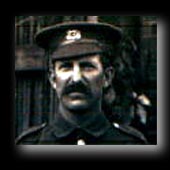
THE JOURNEY
Travel to Belgium is relatively simple, we took the ferry from Ramsgate to Dunkirk then drove the short distance across the French border to Ieper.
Ieper was a great commercial centre in the middle ages, its wealth based on the wool trade. This wealth was reflected in the magnificence of the buildings, particularly the Cloth Hall (Lakenhalle) and St. Martin's Cathedral both originally dating from the 13th century. However, standing in the marketplace (Grote Markt) today it is difficult to imagine the surrounding building as ruins.
Click here to see Ieper after the war and how it rose again from the ruins. During the Great War the area around Ieper formed a bulge, or salient, in the Western front. Although the town itself was occupied by the Germans at the beginning of the war it was recaptured and remained in Allied hands for the remainder of the conflict. Although fighting in some form was continuous throughout the Salient, 4 main battles took place. Third Ypres (July to November 1917) is also known as Passchendale, the bloodiest battle in history.
On our first evening in Ieper we walked into the town and visited the Menin gate (British Memorial to the Missing). Each evening at 8.00pm the traffic, which normally passes through the gate, is stopped and members of the Ieper fire brigade march to the centre of the road and sound the Last Post. This simple ceremony has been performed every evening since 1929, except during the years of occupation by the Germans during the last war.
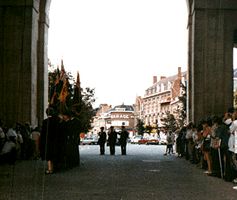 |
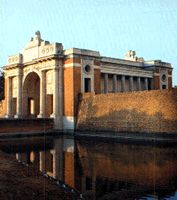 |
|
Sounding
the Last Post
|
The
Menin gate
|
It is difficult to look at the walls of the gate and at the names of the missing without emotion. There are over 54,000 names carved into the stone, these men having died between 1914 and August 15 1917, the names of 35,000 men who died between August 16 1917 and the end of the war are commemorated at Tyne Cot Cemetery, the largest Commonwealth war cemetery in the world.
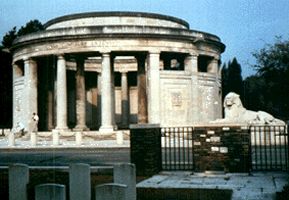
Ploegsteert Memorial
The following day we visited the Ploegsteert Memorial to the Missing. My great grandfather's name is listed here along side the names of 11 446 other men killed during fighting in the area bordered by the River Douve and the towns of Estaires and Furnes and who have no known grave. This was perhaps the most poignant part of our visit, and we laid a wreath in remembrance of both him and his comrades.
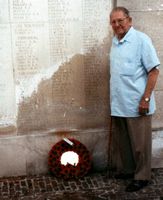 |
 |
|
After
79 years John French was remembered by his family.
|
|
One day I hope to see the war diary kept by my great grandfather's commander and find out what happened on the 25 September 1915. This date is significant since it was the first day of the Battle of Loos, did John French go over the top in some sort of diversionary attack? Did he fall victim to a sniper's bullet or did he simply fail to return from a raid on the enemy's trenches? Whatever the manner of his death I can only hope that the end came quickly and that he did not linger in some water filled shell hole in no-man's land for hours or days.
[Since writing these Web pages I have visited the Public Record Office at Kew, London and learned something of what happened on 25 September 1915]
During the remainder of our stay we visited other memorials and sites within the Salient including:
Sanctuary wood with it's cemetery and preserved trenches.
The German cemetery at Langemark, final resting place of 35,000 men.
The Australian dugout at the Zonnebeke brickworks.
The museums at Ieper and Hooge.
The Pool of Peace at Spanbroekmolen.
If you have never visited this area before it is probably worth taking a tour, we spent an afternoon with Salient Battlefield Tours operated by an enterprising young Englishman who was both enthusiastic and knowledgeable - I recommend him to you.
Our short visit was soon over and we headed back to England. We had achieved our aim and our journey had been emotional but at the same time very interesting, it certainly made me more aware of this period in both my families' and world history.
